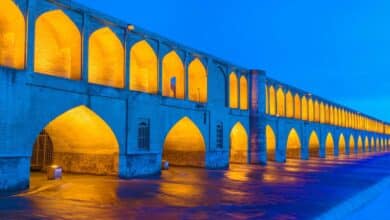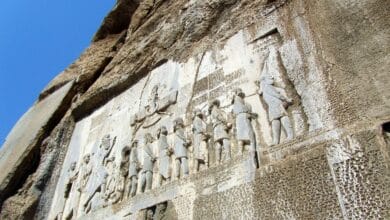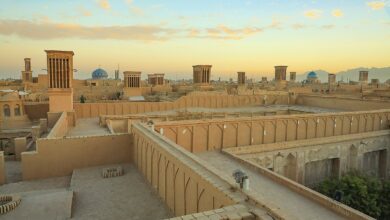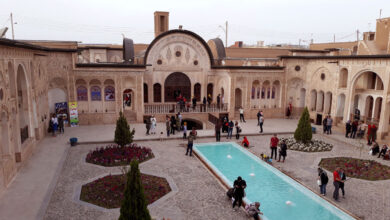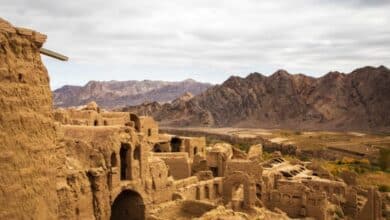
Yalda is an ancient Persian festival that is celebrated on the longest night of the year, typically around December 20th or 21st. The festival marks the victory of light over darkness and symbolizes the triumph of good over evil. It is a time for Iranians to come together with family and friends to celebrate the winter solstice, and to honor the ancient Persian goddess of light, Mithra.
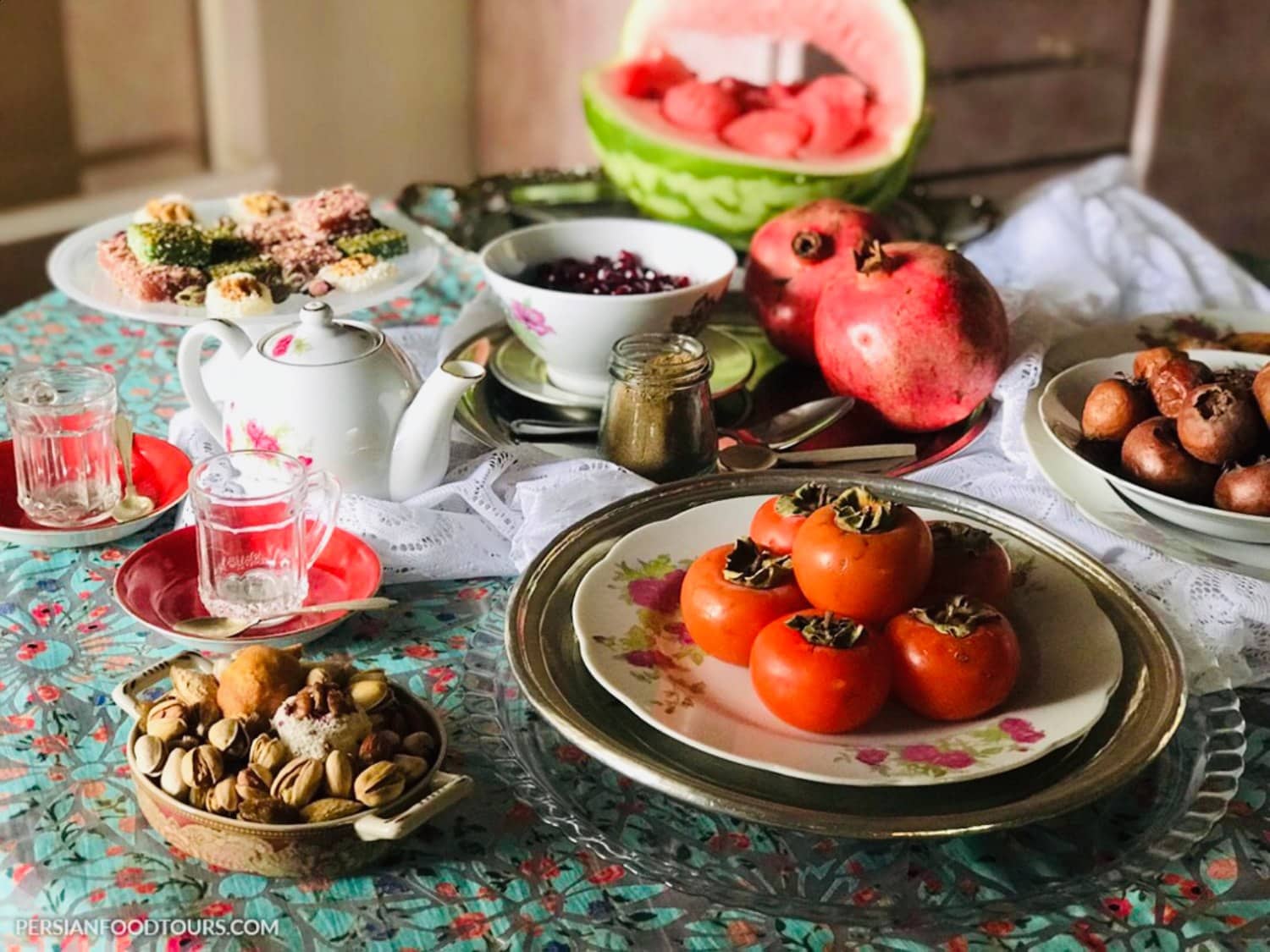
The celebration of Yalda is rooted in Zoroastrianism, the ancient religion of Iran, which was founded by the prophet Zoroaster. In Zoroastrianism, the sun is seen as a symbol of goodness and light, and the longest night of the year is a time to celebrate the return of the sun and the victory of light over darkness.
On Yalda night, Iranians gather with their loved ones to celebrate the occasion. They typically hold a feast, which includes a variety of traditional Persian foods such as nuts, dried fruits, pomegranates, and watermelon. They also read poetry, tell stories, and share traditional Yalda songs. Many Iranians also believe that eating a variety of fruits and nuts on Yalda night can bring good luck and prosperity in the coming year.
Contents
Ancient Origins and Historical Background of Yalda Night
The entwined cultural and spiritual strands that form the tapestry of Yalda Night, or Shab-e Yalda, have endured through millennia, marking it as one of the most ancient and revered celebrations in the Persian calendar. This festival, which venerates the longest night of the year, is more than just a celebration of the winter solstice; it is a deeply symbolic confluence of pre-Islamic, Zoroastrian, and later, Islamic traditions.
In ancient times, the people of the Persian Empire were deeply attuned to nature’s rhythms. They recognized the solstice as a critical juncture, the night when darkness peaked and the promise of increasing light began. The term “Yalda” is derived from the Syriac word meaning ‘birth.’ This likely refers to the rebirth of the sun, a phenomenon celebrated as the herald of brighter days ahead after a prolonged period of growing darkness.

Predating Zoroastrianism, Mithraism was centered around the deity Mithra, often emblematic of the sun and its life-giving properties. This god was believed to have been born on Yalda Night, emerging from the rocky crags to bestow his blessings on the world. This belief system, with its focus on the sun god’s birth on the longest night, emphasized the theme of light’s victory over darkness, a narrative that seamlessly merged with Yalda’s ethos.
The Zoroastrian Influence
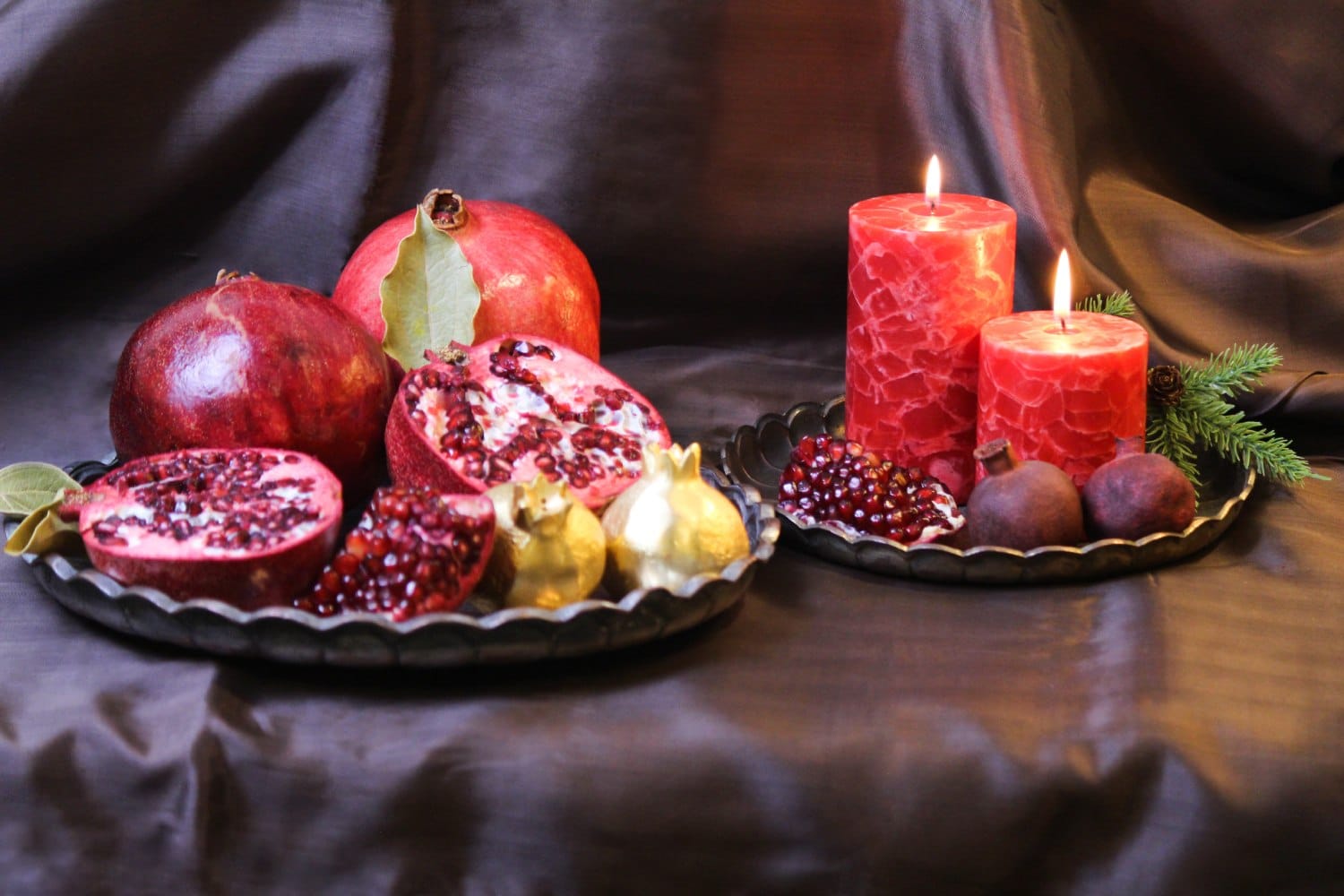
With the rise of Zoroastrianism, Yalda found another spiritual anchor. Zoroastrians, with their emphasis on the dualities of light and dark, good and evil, saw Yalda as a night symbolizing the enduring struggle between these forces. It became a night of reflection, gratitude, and hope. Moreover, the Zoroastrian festival of “Zurvan,” dedicated to the deity representing time and cosmic order, found resonances with Yalda, enhancing its significance.
Yalda Traditions and Customs

The celebration of Yalda Night, or Shab-e Yalda, is a rich tapestry of traditions and customs that echo the ancient roots of this Persian festival. While the historical significance of Yalda Night is undeniable, its continued relevance in modern times can be attributed to these deeply ingrained customs that connect generations of celebrants to their ancestors. Let’s delve into the most cherished of these traditions
Gathering of Families
Yalda is fundamentally a familial festival. Extended families congregate, often at the house of the eldest member. The gathering underscores the importance of unity, solidarity, and the passage of wisdom between generations. Staying awake all night, they usher in the arrival of winter and the renewed promise of spring.
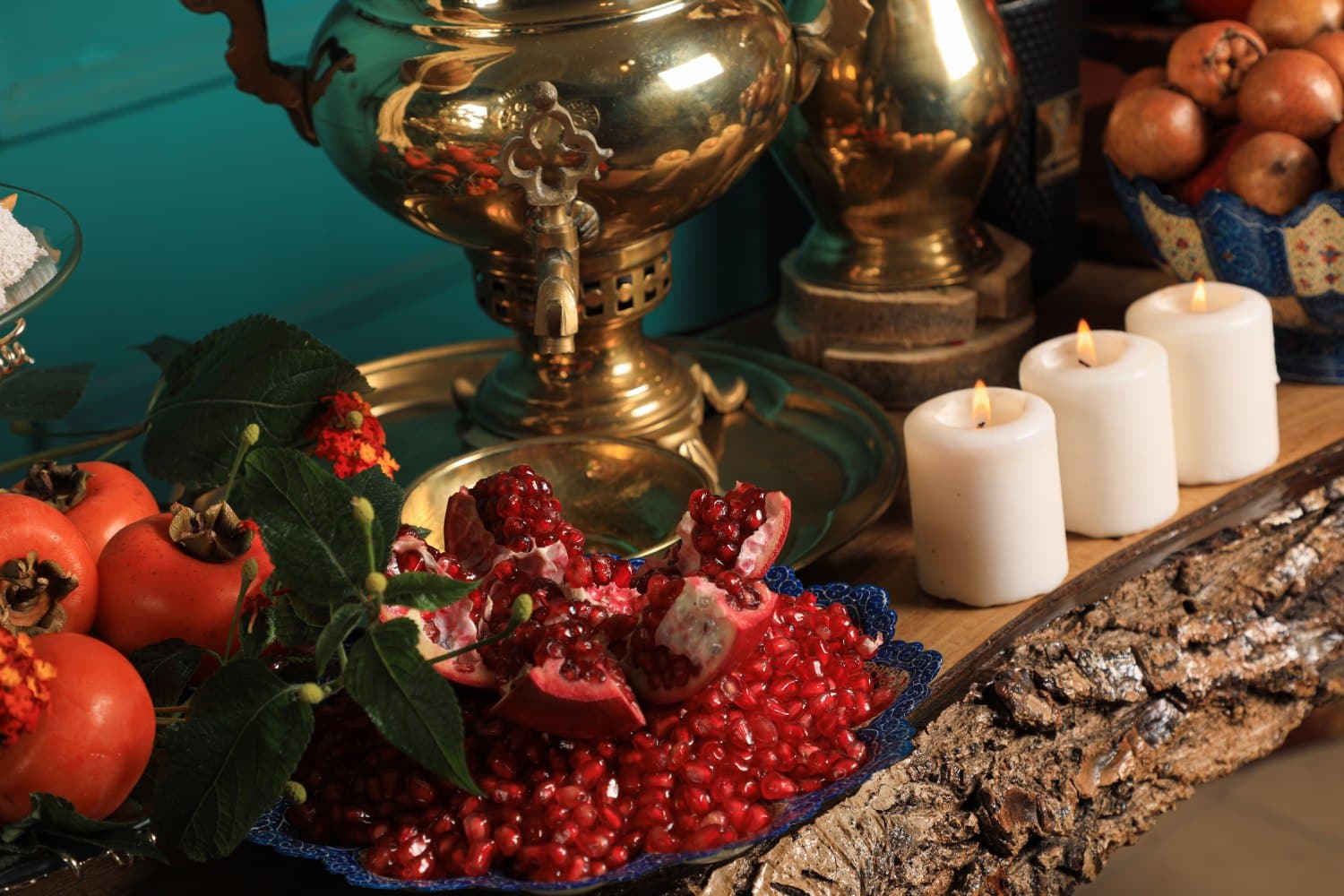
The Feast of Yalda
Food plays a central role in the Yalda celebrations. The table is adorned with a variety of treats. Fresh fruits, particularly those that are red, are predominant. Watermelon, with its red flesh, symbolizes the dawn’s glow and is believed to protect individuals from excessive cold and illness during the winter. The pomegranate, with its crimson arils, stands for the vibrancy of life and the invincibility of the human spirit.
Reading of Hafez

One of the most poetic customs is the reading from the “Divan of Hafez,” the collective works of the renowned Persian poet, Hafez. Families engage in “Fal-e Hafez,” wherein they pose a question in their heart, randomly open a page of the Divan, and read the poem on that page, seeking guidance or an omen for the year ahead. The ethereal verses of Hafez, often speaking of love, fate, and the divine, add a touch of mysticism to the night.
Storytelling and Ancient Tales
Older members of the family often regale the young with tales of yore, mythological stories, and ancestral anecdotes. This oral tradition serves to keep alive ancient legends, imparting values and connecting younger generations to their rich cultural past.
Lighting of Candles and Bonfires
In homage to the central theme of light overcoming darkness, candles are lit throughout homes. In some regions, outdoor bonfires are also a common sight, with people jumping over the flames in a symbolic act of purification and the shedding of any misfortunes.

Playing of Traditional Music
Many gatherings are graced by the strains of traditional Persian music. Instruments like the “tar,” “setar,” and “daf” create an ambiance that’s both nostalgic and celebratory.

Exchanging of Gifts
It’s customary for elders to bestow gifts upon the younger members of the family. While these gifts can vary, they’re often symbolic, serving as tokens of blessing, prosperity, and good fortune for the year ahead.
Symbolism and Spiritual Meaning of Yalda Night
Yalda Night, with its rich history and intricate tapestry of traditions, is imbued with profound symbolism and spiritual significance. Beyond the feasts and familial gatherings lies a deeper meaning that connects people to the mysteries of the universe, the cycles of nature, and the essence of existence.
The Victory of Light Over Darkness
At its heart, Yalda celebrates the triumph of light over darkness. As the longest night gives way to an increasing span of daylight, it symbolizes the inevitable victory of good over evil, hope over despair, and knowledge over ignorance. This cyclical nature of the universe, where after the deepest darkness comes the promise of light, serves as a potent reminder of life’s transient challenges and the eventual emergence of better days.

Nature and its Rhythms
The winter solstice, which Yalda Night marks, is a poignant juncture in nature’s calendar. By celebrating this event, there is an inherent recognition of the importance of being in harmony with nature. The seasonal fruits consumed, especially the red ones like pomegranates and watermelons, are not just gastronomic delights but symbols of the earth’s bounty and the life-giving force of nature.
Rebirth and Renewal
Derived from a Syriac word meaning ‘birth’, Yalda is synonymous with rebirth. Just as the sun is ‘reborn’ after the longest night, marking longer days, it’s a time for personal renewal and spiritual awakening. It’s an invitation to shed old habits, embrace new beginnings, and cultivate inner growth.
Connection to the Divine
The practice of reading Hafez’s poetry, seeking guidance or omens, underscores the quest for a deeper connection with the divine. The verses, replete with references to love, fate, and divinity, serve as conduits to introspection and spiritual enlightenment.

Unity and Solidarity
The gathering of families, spanning generations, is a manifestation of unity and solidarity. It emphasizes the interconnectedness of humans, the importance of roots, and the collective strength that arises from being united.
Fire as Purification
The lighting of candles and bonfires is more than just a defense against the physical darkness. Fire, in many spiritual traditions, represents purification, transformation, and enlightenment. Jumping over bonfires, a practice in some regions, is a symbolic act of shedding negativities and rejuvenating one’s spirit.
Yalda Today – Preparations and Celebrations

While Yalda Night has roots that stretch back millennia, its essence and celebration have continually evolved, adapting to the changing world. In modern times, Yalda remains a cherished celebration but with nuances that reflect contemporary life. The anticipation is evident as homes are cleaned and decorated weeks in advance, and shopping for the celebration becomes a festive outing itself. Markets and stores showcase special Yalda displays, selling traditional foods, decorations, and gifts.
Modern communication tools, especially social media, have played a significant role in globalizing Yalda. Today, not only Iranians but people from various parts of the world share Yalda greetings, photos, and memories online. Digital platforms host virtual Yalda gatherings, allowing families separated by distances to come together. In urban centers, many establishments, from restaurants to cultural hubs, embrace the festivity. Restaurants offer Yalda menus, clubs might have Yalda-themed nights, and cultural centers or museums might organize exhibitions or performances centered around Yalda’s history and traditions.
While the traditional fruits like pomegranates and watermelons remain staples at these gatherings, modern tables might also feature fusion dishes, blending ancient recipes with contemporary tastes. Pomegranate-infused desserts, cocktails, and salads bring a modern touch to the ancient feast. Entertainment too has seen an evolution.
While reading Hafez’s poetry remains central, modern Yalda gatherings might also include contemporary music, films, or games. The blend of tradition with contemporary elements is also evident in fashion. Many choose to wear traditional Persian clothing, but with contemporary touches, as designers and brands often release Yalda collections that meld the rich textures and patterns of traditional attire with modern styles.
Recipes and Cuisine for Yalda Night
The cuisine associated with Yalda Night is both a gastronomic delight and a testament to the celebration’s rich historical roots. From fresh fruits to warming dishes, the food on Yalda is symbolic, representing the themes of the festival, while also preparing the body for the cold winter days ahead. Here are some recipes and traditional items associated with Yalda:
1. Fresh Fruits:
- Watermelon: As mentioned before, the deep red of the watermelon symbolizes the dawn. It’s also believed to protect against the cold and illness during winter.
- Pomegranate: The ruby-red seeds of the pomegranate represent the glow of life and the bounty of nature.
2. Ajil-e Moshkel Gosha (Mixed Nuts):

This mix traditionally includes seven ingredients:
- Almonds
- Hazelnuts
- Pistachios
- Peanuts
- Pumpkin seeds
- Raisins (both black and golden)
- Dried mulberries
Method: Simply mix all the ingredients in a bowl. The nuts are often soaked in water a day before, peeled, and then added to the mix.
3. Nokhodchi (Chickpea Cookies):
Ingredients:
- 2 cups chickpea flour
- 1 cup confectioner’s sugar
- 1 cup clarified butter (ghee)
- 1/4 tsp cardamom powder
- Slivered pistachios for garnish
Method:
- Sift chickpea flour and mix it with cardamom powder.
- Melt the clarified butter and mix it with the sugar until well combined.
- Gradually add the chickpea flour and knead it into a soft dough.
- Take small amounts of dough, shape them into balls, and press them slightly.
- Place a slivered pistachio on each cookie.
- Bake at 150°C (300°F) for about 20 minutes or until they’re slightly golden.
- Let them cool down before serving.
4. Halva Ardeh (Sesame Halva):
Warm beverages are often consumed to stay cozy during the long, cold night. Common drinks include:
Ingredients:
- 2 cups sesame paste (tahini)
- 1 1/2 cups honey or syrup
- Optional: pistachios, almonds, or walnuts for added texture
Method:
- Heat the honey or syrup until it becomes slightly thickened.
- Gradually mix in the sesame paste and stir continuously to prevent lumps.
- Once combined and smooth, pour the mixture into a greased dish.
- Allow it to cool and set. Once firm, cut into squares or diamond shapes.
5. Hot Drinks:
- Chai (Tea): Black tea, often brewed with cardamom and sometimes rose petals.

